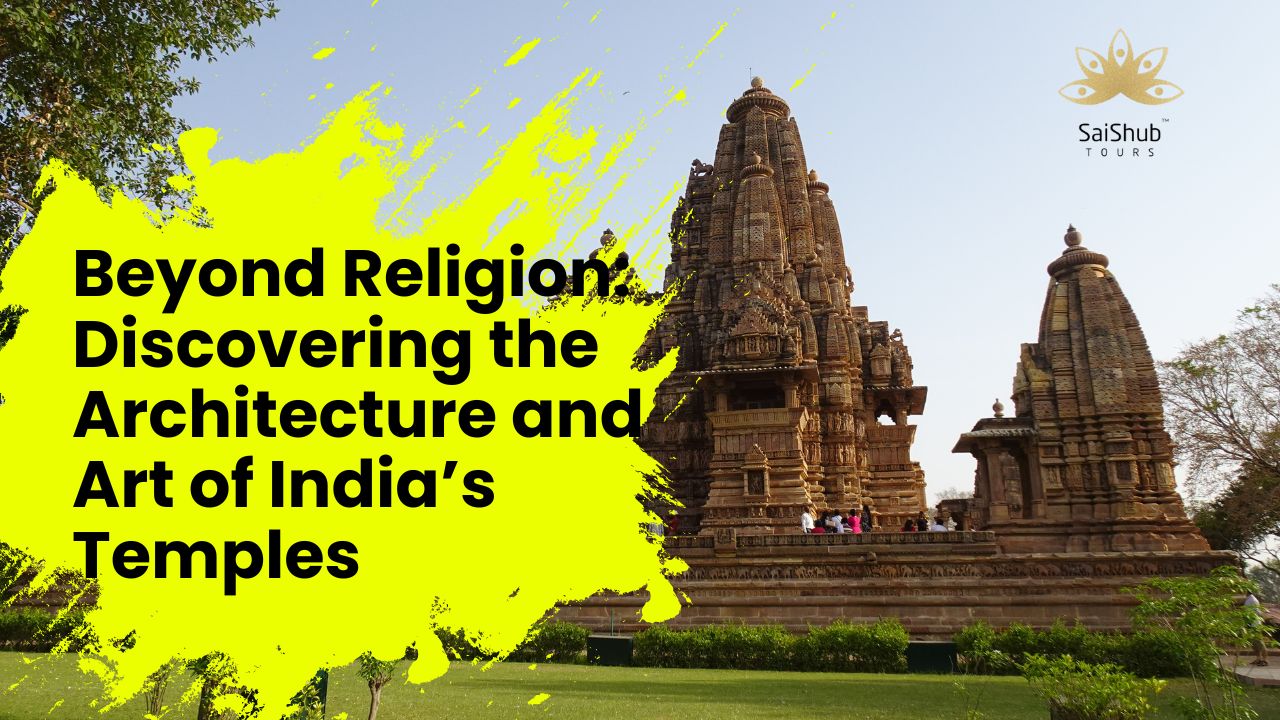
When you think of Indian temples, spirituality, rituals, and devotion probably come to mind first. But there’s another layer that often goes unnoticed — the awe-inspiring architecture and intricate artistry that make Indian temples masterpieces of cultural heritage. From the towering gopurams of Tamil Nadu to the delicately carved shrines of Odisha, Indian temples aren’t just places of worship — they are living museums of stone, sculpture, and soul.
In this blog, we journey through the architectural brilliance and artistic legacy of India’s temples — beyond religion — to appreciate their historical, cultural, and aesthetic importance.
1. Temples as Time Capsules of Indian History
Indian temples are more than 1,000 years old in many cases. Each one tells a story — not just of gods and goddesses, but of kings, artisans, empires, and evolution.
Examples:
Brihadeeswarar Temple, Thanjavur (Chola Dynasty, 11th century): Known for its massive vimana (tower) and granite construction.
Sun Temple, Konark (13th century): A marvel shaped like a chariot, representing the sun god Surya.
These temples preserve the technological and engineering genius of ancient India — without cranes, cement, or digital tools, they built structures that still stand strong today.
2. Stone as a Canvas: Sculpture That Tells Stories
One of the most beautiful aspects of Indian temples is the narrative art carved into their walls. Instead of mere decoration, these sculptures serve as books in stone.
Khajuraho Temples: Famous for erotic carvings, but also depict dance, war, everyday life, and spiritual progression.
Hoysaleswara Temple, Halebidu: Every inch of this temple is carved with gods, animals, battles, and mythological tales.
These intricate carvings help preserve stories from epics like the Ramayana, Mahabharata, and Puranas — even for those who couldn’t read.
3. Regional Styles That Define Indian Temple Architecture
India’s temple architecture isn’t uniform. It varies beautifully across regions, each with distinct design language:
| Region | Style | Notable Features |
|---|---|---|
| North India | Nagara | Curved towers (shikharas), intricate exteriors |
| South India | Dravidian | Pyramid-shaped gopurams, large courtyards |
| Odisha | Kalinga | Vertical structure with detailed stonework |
| West India | Solanki | Ornate domes, carved columns, symmetry |
| North-East | Hybrid/Assamese | Simpler structures, often built with brick |
Each style reflects the climate, materials, and culture of its region.
4. Temples as Hubs of Art, Dance, and Music
Temples weren’t just for rituals — they were cultural centres. Many classical Indian dance forms, like Bharatanatyam and Odissi, evolved within temple premises. Temples hosted:
Music concerts
Dance performances
Art festivals
The sculptures often depict dancers, musicians, and even stage scenes, capturing India’s ancient performing arts.
5. Scientific and Mathematical Marvels
Many temples are built using advanced knowledge of astronomy, acoustics, and geometry.
Meenakshi Temple, Madurai: Aligned with cardinal directions, it’s a marvel of town planning.
Virupaksha Temple, Hampi: Uses pinhole camera principles to project temple towers onto walls.
Sun Temple, Konark: Designed to let sunlight fall precisely on the deity at dawn.
This proves that temples were multi-disciplinary projects, blending religion, science, and aesthetics.
6. Symbolism in Every Element
Indian temple architecture is highly symbolic:
Mandapa (hall): Represents the worldly life
Garbhagriha (sanctum sanctorum): Represents the inner self or soul
Shikhara/Vimana: Symbolises the path to heaven
Temple tanks: Represent purity and rebirth
Even the number of steps, direction of the door, and materials used carry deep metaphysical meanings.
7. Temple Trails That Showcase Architectural Splendour
Here are a few temple circuits in India known for their architectural brilliance:
| Trail | Must-Visit Temples |
|---|---|
| Tamil Nadu Temple Trail | Meenakshi Temple, Thanjavur Brihadeeswarar, Rameshwaram |
| Odisha Heritage Circuit | Lingaraj Temple, Konark Sun Temple, Mukteshwar Temple |
| Karnataka Hoysala Route | Chennakesava Temple (Belur), Hoysaleswara Temple (Halebidu) |
| Gujarat Temple Trail | Modhera Sun Temple, Somnath Temple |
| North India Spiritual Circuit | Khajuraho, Kedarnath, Badrinath, Varanasi Vishwanath |
FAQ
Absolutely! Indian temples are open to all respectful visitors and are admired worldwide for their art and history.
Winter (October to March) is ideal for temple tours, especially in South and Central India.
Yes! Tour operators like SaiShub Tours offer guided packages highlighting historical, spiritual, and architectural aspects.
Examples include Sun Temple (Konark), Group of Monuments at Mahabalipuram, and Brihadeeswarar Temple
Rules vary. While many allow photography outside, interiors may be restricted. Always check local guidelines.
Conclusion
India’s temples go beyond rituals and prayers. They are living testimonials to a civilisation that revered art, architecture, science, and spirituality as one. Whether you are a devotee, an architect, an artist, or simply a traveller — temple tours offer something to everyone.
So next time you visit a temple, don’t just bow and leave — look up, look around, and look within. The stories in stone, the rhythm in carvings, and the divine geometry will leave you transformed.

